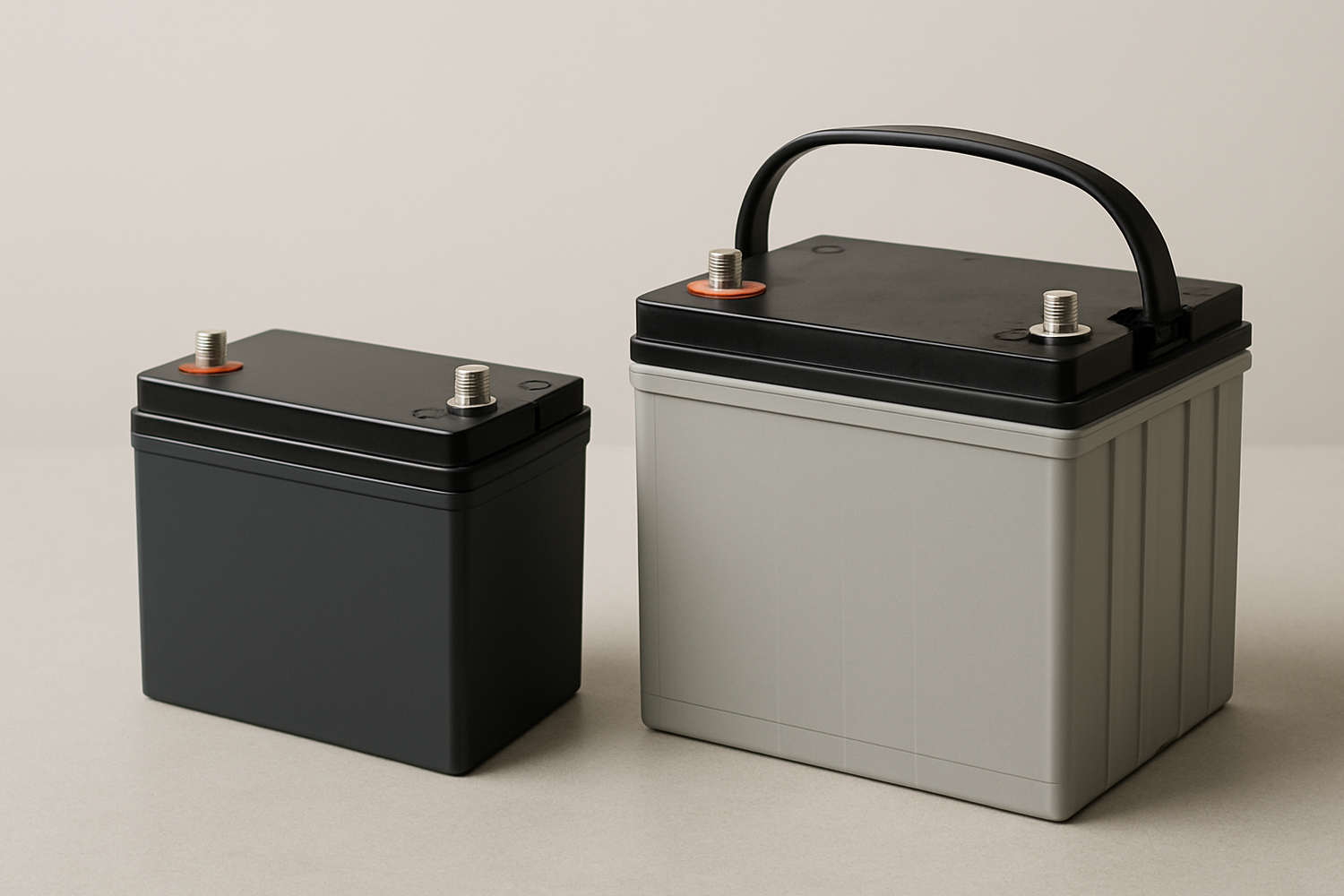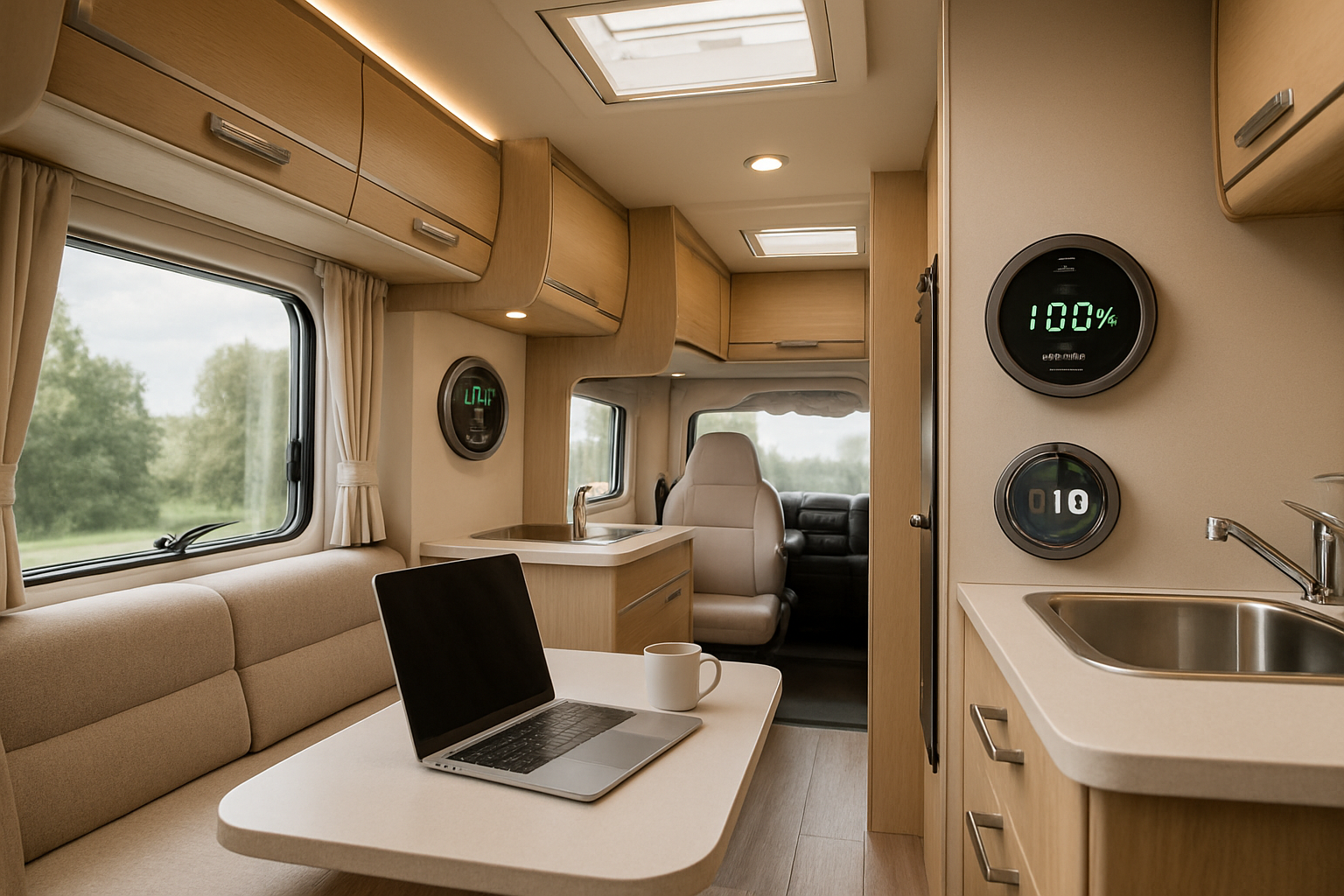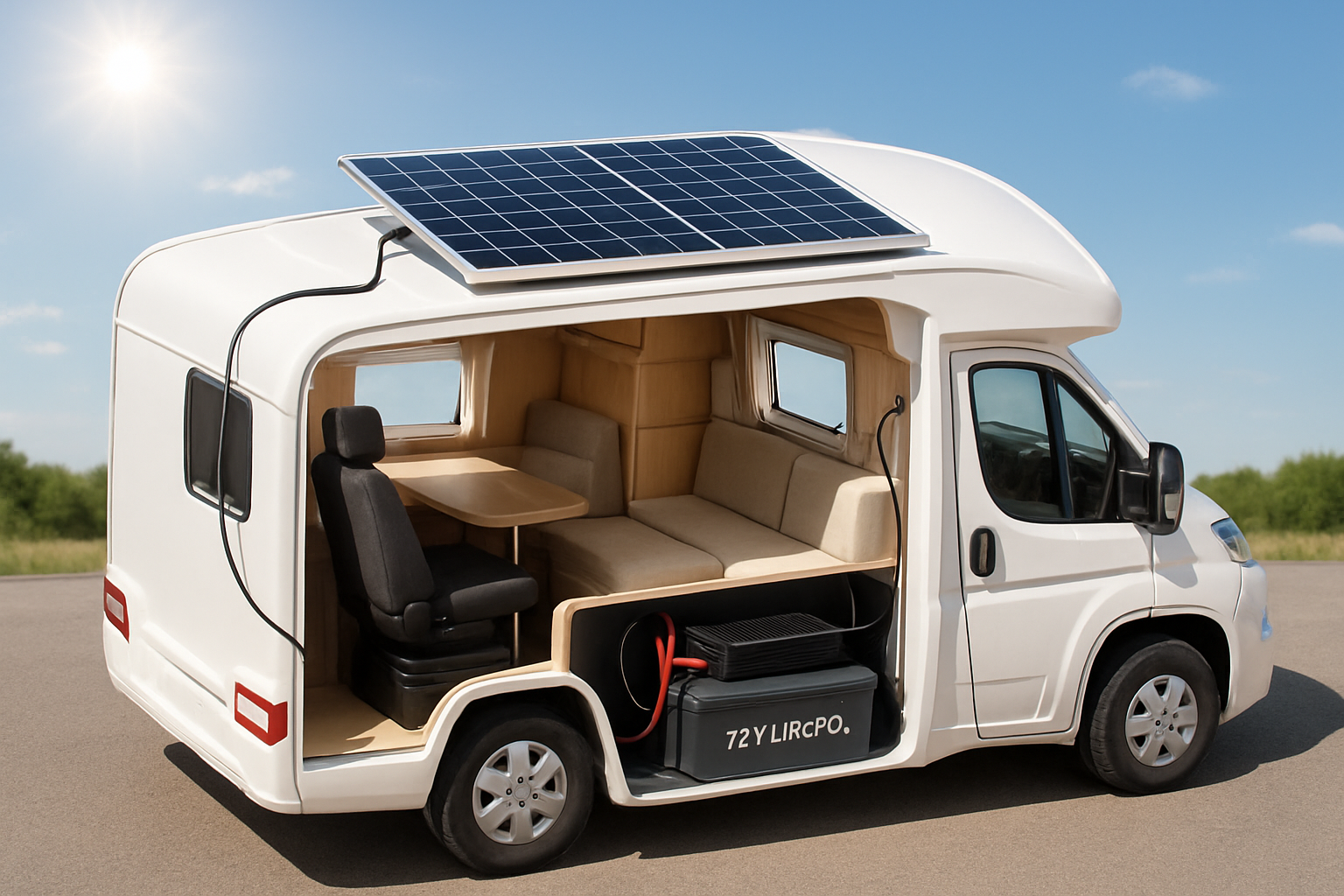Choosing the right deep cycle battery for your RV solar charging system is a critical decision that directly impacts your freedom and comfort on the road. The battery bank is the heart of your off-grid power setup, storing the energy harnessed by your solar panels. Two dominant technologies in this space are Lithium Iron Phosphate (LiFePO4) and Absorbent Glass Mat (AGM). While both serve the same fundamental purpose, they differ significantly in chemistry, performance, and long-term value. This comparison will provide a clear, data-driven look at each option to help you make a well-informed choice for your mobile lifestyle.
Understanding the Core Technologies: LiFePO4 and AGM
Before comparing performance, it’s helpful to understand what makes these batteries different at a chemical level. Their internal construction dictates their capabilities and limitations.
What is an AGM Battery?
AGM batteries are an advanced type of lead-acid battery. The name 'Absorbent Glass Mat' refers to the fine fiberglass mat separator between the lead plates that absorbs the sulfuric acid electrolyte. This design makes the battery spill-proof and maintenance-free, a significant improvement over traditional flooded lead-acid batteries. AGM technology is mature, reliable, and has been a dependable power source for RVs for many years.
What is a LiFePO4 Battery?
LiFePO4 is a specific type of lithium-ion battery known for its exceptional safety and stability. It uses lithium iron phosphate as the cathode material. This chemistry is more robust and less prone to overheating than other lithium-ion chemistries. As part of the broader trend in battery technology, LiFePO4 batteries offer higher energy density, a longer lifespan, and significant weight savings, making them an increasingly popular choice for demanding applications like RV solar energy storage systems. The growth of battery storage is a key part of the global energy transition, with costs for lithium-ion technologies falling significantly over the last decade.
Head-to-Head Comparison: Key Performance Metrics
When powering an RV, several performance indicators are crucial. These include how long the battery lasts, how much of its stored energy you can actually use, and how it physically fits into your setup.
| Feature | LiFePO4 Battery | AGM Battery |
|---|---|---|
| Cycle Life | 3,000 - 7,000+ cycles | 300 - 700 cycles |
| Usable Capacity (DoD) | 80-100% | 50% recommended |
| Weight (for 100Ah) | ~25-30 lbs | ~60-70 lbs |
| Charging Efficiency | ~95% | ~80-85% |
| Charging Speed | Fast (1-3 hours) | Slower (5-8+ hours) |
Lifespan and Cycle Count
A 'cycle' is one full charge and discharge. A LiFePO4 battery can typically deliver between 3,000 and 7,000 cycles, whereas an AGM battery offers around 300 to 700 cycles. This dramatic difference means a single lithium iron phosphate battery can outlast multiple sets of AGM batteries, making it a more durable long-term solution.
Depth of Discharge (DoD) and Usable Capacity
Depth of Discharge refers to the percentage of the battery's capacity that is used. To preserve its health, an AGM battery should only be discharged to about 50% of its capacity. Exceeding this limit regularly will shorten its life. In contrast, a LiFePO4 battery can be safely discharged to 80-100% without significant degradation. This means a 100Ah LiFePO4 battery provides almost twice the usable energy of a 100Ah AGM battery, giving you more power for longer periods off-grid.
Weight and Energy Density
Weight is a constant concern in an RV. LiFePO4 batteries have a much higher energy density, meaning they store more power in a smaller, lighter package. A 100ah lithium ion battery can be 50-60% lighter than its AGM counterpart of the same capacity. This weight reduction can improve fuel efficiency and help you stay within your vehicle's gross vehicle weight rating (GVWR).
Efficiency and Charging Speed
LiFePO4 batteries are more efficient. They have a round-trip efficiency of about 95%, meaning very little energy is lost during charging and discharging. AGM batteries are closer to 80-85% efficient. Furthermore, LiFePO4 batteries can accept a higher charge current, allowing them to recharge much faster from your solar panels—a significant advantage when sunlight is limited.
The Financial Aspect: Upfront Cost vs. Long-Term Value
One of the most debated topics is the cost. While AGM batteries have a lower initial purchase price, the true value becomes clearer when looking at the total cost of ownership over the battery's lifespan.
Disclaimer: This information is for educational purposes only and does not constitute financial or investment advice.
Initial Investment
There is no denying that AGM batteries are more budget-friendly upfront. For RV owners who are weekend travelers or have minimal power needs, the lower initial cost can be an attractive option.
Calculating the Total Cost of Ownership
The long-term value of a LiFePO4 battery becomes apparent when you calculate the cost per cycle. Due to its vastly superior cycle life, a LiFePO4 battery often results in a lower cost per kilowatt-hour over its lifetime. You might replace AGM batteries three, four, or even more times in the lifespan of a single LiFePO4 battery. A deeper dive into the ultimate reference for solar storage performance demonstrates how factors like cycle life and efficiency directly impact long-term value. According to research from the International Renewable Energy Agency (IRENA), battery costs have been falling dramatically, and this trend is expected to continue, making advanced technologies more accessible.
Practical Considerations for Your RV Solar Charging System
Integrating a new battery into your RV involves more than just swapping it out. Compatibility and environmental factors play a crucial role.
System Compatibility
When upgrading from AGM to LiFePO4, you must ensure your charging components are compatible. This includes your solar charge controller, converter/charger, and any battery monitoring system. Many modern controllers have a specific setting for lithium batteries to accommodate their unique charging profile (typically 14.4V - 14.6V bulk charge with no float stage). Using an AGM-profile charger can result in undercharging and poor performance.
Temperature Performance
AGM batteries generally handle cold weather well, delivering reliable power even in freezing conditions. LiFePO4 batteries have a key limitation: most cannot be charged at temperatures below freezing (0°C or 32°F), as this can cause permanent damage. To address this, many LiFePO4 batteries include a Battery Management System (BMS) with a low-temperature cutoff. Some premium models even feature built-in heaters to allow for safe charging in cold climates.
Safety Features
Both battery types are very safe for RV use. AGM batteries are sealed and stable, though they can vent hydrogen gas if severely overcharged. LiFePO4 is considered one of the safest lithium chemistries due to its thermal stability. Additionally, every LiFePO4 battery includes an internal BMS that protects against overcharging, over-discharging, short circuits, and high temperatures, adding a critical layer of safety.
Making the Right Choice for Your Travels
Ultimately, the best deep cycle battery depends on your specific needs. If you are a casual RVer who takes short trips and is on a tight budget, an AGM battery can be a practical and reliable choice. It's a proven technology that gets the job done.
However, for full-time RVers, avid boondockers, or anyone who prioritizes performance, longevity, and weight savings, the LiFePO4 battery is the superior investment. Its higher usable capacity, incredible cycle life, faster charging, and lower long-term cost provide a level of energy independence and reliability that is hard to match. As the International Energy Agency (IEA) notes, the rapid growth in battery deployment is a testament to the technology's falling costs and rising performance, transforming energy use in mobile and stationary applications alike.
Frequently Asked Questions
Can I replace my AGM battery directly with a LiFePO4 battery?
Not always directly. You must verify that your RV's solar charge controller and power converter are compatible with the LiFePO4 charging profile. Many modern components are multi-chemistry compatible, but older systems may need an upgrade to ensure the battery charges correctly and safely.
Are LiFePO4 batteries safe for an RV?
Yes, they are extremely safe. LiFePO4 chemistry is inherently stable, and the integrated Battery Management System (BMS) provides comprehensive protection against common issues like overcharging, deep discharging, and overheating, making them a very secure option for an RV electrical system.
How does temperature affect these batteries?
AGM batteries perform reliably in a wide range of temperatures but can lose some capacity in extreme cold. LiFePO4 batteries can be discharged in the cold but have a critical limitation: they generally cannot be charged below 32°F (0°C) unless they have a built-in heating system. The BMS will prevent charging to protect the cells.
Is the higher cost of a lithium battery worth it?
For many users, yes. While the upfront cost is higher, the long-term value is excellent. When you consider its vastly longer lifespan (meaning you buy fewer batteries over time), greater usable capacity, higher efficiency, and significant weight savings, the total cost of ownership for a LiFePO4 battery is often lower than for AGM batteries.





Leave a comment
All comments are moderated before being published.
This site is protected by hCaptcha and the hCaptcha Privacy Policy and Terms of Service apply.